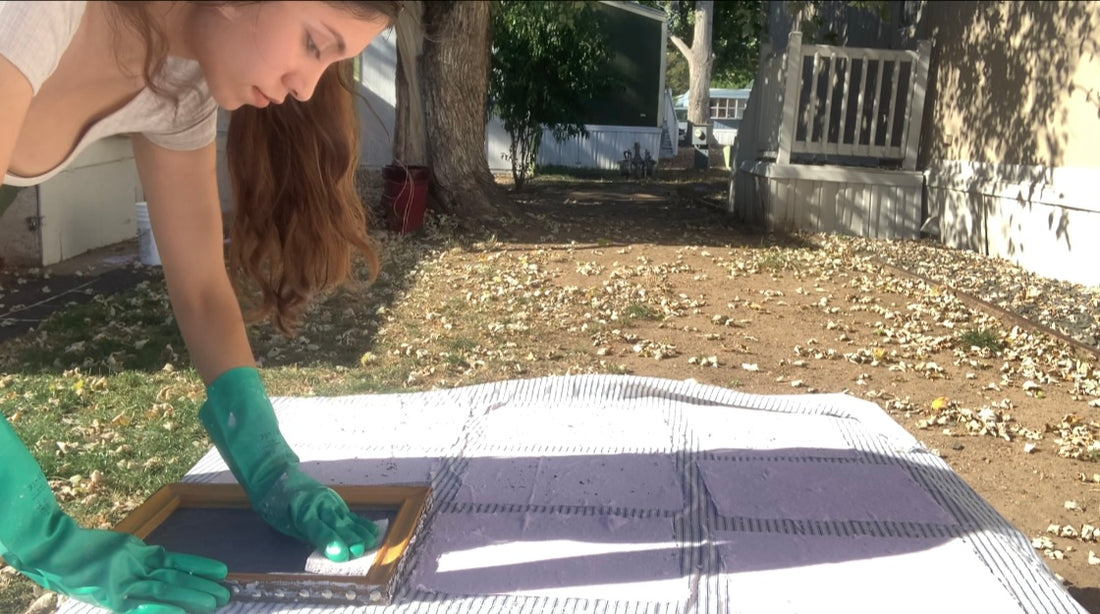In today's fast-paced world of mass production, there's a unique charm in creating something with your own hands. Handmade paper is one such craft that allows you to connect with your artistic side while also contributing to sustainable living. In this blog, we'll take you on a journey through the mesmerizing process of how Genova Co makes handmade packaging paper.
Materials You'll Need:
1. Shredded paper: Collect used paper or cardboard from old newspapers, magazines, or packaging materials. These can be the foundation for your handmade paper.
2. Emulsion Blender: You'll need a powerful blender to turn your paper scraps into pulp.
3. A Deckle and Mould: These are essential tools for shaping and lifting your paper from the pulp. We made ours using a mesh screen and thrifted picture frames
4. A Basin or Tub: This is used to hold the pulp and water mixture.
5. A Sponge: To remove excess water from your handmade paper.
6. Cotton Sheets or Cloths: You'll need a few old cotton cloths or an old sheet for couching (transferring) the paper from the mould.
7. Water: Clean, lukewarm water will be the medium for your papermaking adventure.
Step 1: Preparing the Pulp
1. Shred your paper scraps. The smaller the pieces, the smoother your paper will be.
2. Soak the paper scraps in water for a few hours or overnight. This softens the paper fibers, making them easier to blend.
3. Once the paper scraps are thoroughly soaked, blend them in the blender until you have a smooth pulp. You can add more water to reach your desired consistency.
Step 2: Forming the Sheets
1. Fill your basin or tub with clean, lukewarm water. The water should be deep enough to submerge your deckle and mould. Optional: squirt in water colors or acrylic paint into the water to give the sheets some color.
2. Place the deckle (the frame without the screen) on a flat surface, and lay the mould (the frame with the screen) on top of it.
3. Dip the deckle and mould into the basin of water, ensuring that they are fully submerged.
4. Hold the two frames together and slowly lift them out of the water, allowing the excess water to drain.
5. Pour the pulp mixture into the mould, distributing it evenly to create a smooth sheet of paper.
Step 3: Couching and Drying
1. Carefully place a cotton cloth on top of the wet paper pulp. Using a sponge, press gently to remove excess water.
2. Slowly peel the cotton cloth away, revealing your delicate sheet of handmade paper.
3. Transfer the paper to a dry, flat surface and allow it to air dry, for the best results, leave the drying pieces under the sun. You can also use a hairdryer on a low setting to speed up the process.
Why Handmade Paper?
1. Provides Sustainability: Handmade paper is eco-friendly as it recycles old paper scraps, reducing the demand for new trees to be cut down. It is also one less cost for our small business keeping our prices at a reasonable rate.
2. Artistic Expression: Making handmade paper allows you to experiment with texture, color, and design, making each sheet a unique work of art.
3. Mindful Crafting: The process of making handmade paper is a therapeutic and meditative experience that can be a soothing escape from our digital world.
Creating handmade paper is a beautiful blend of art, recycling, and sustainability. Each sheet tells a story of creativity, patience, and a connection to the environment. So, why not join in with Genova on your own papermaking journey and experience the joy of crafting with your hands from scratch?

